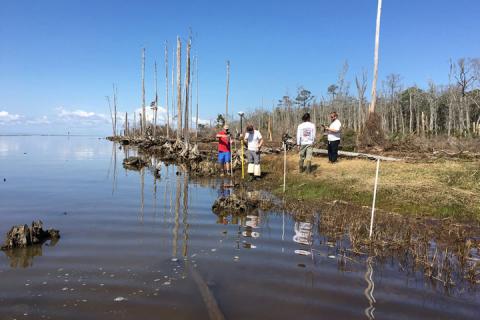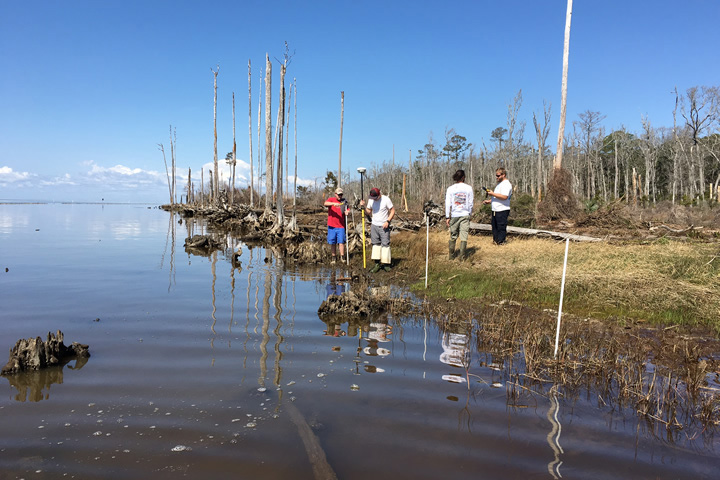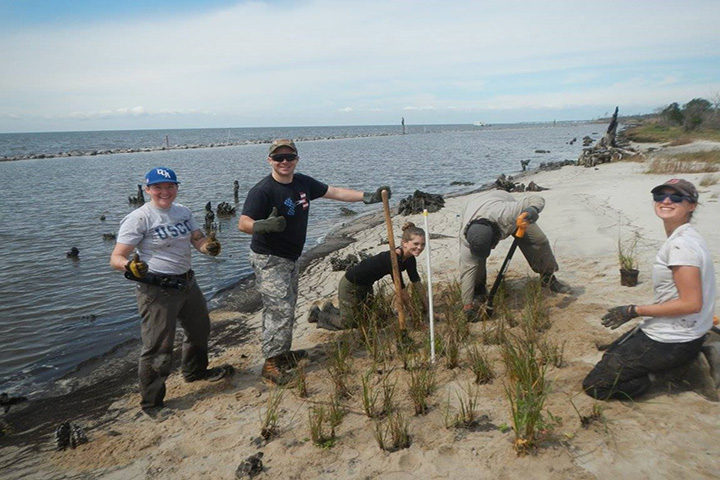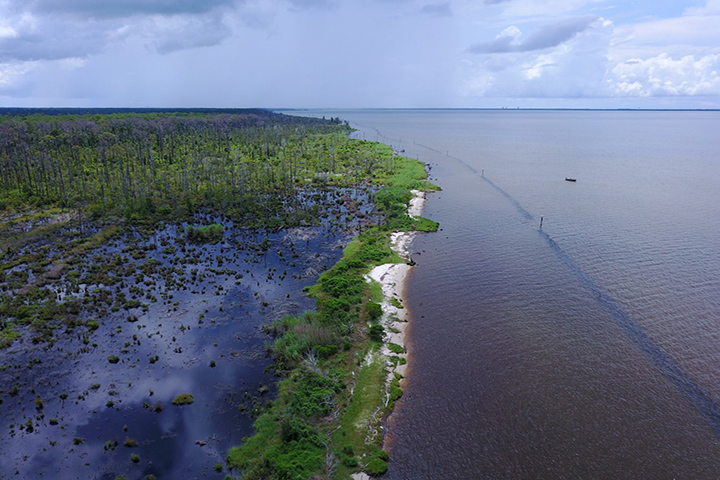
Degradation of coastal habitats has led to major declines in oyster reefs and coastal wetlands. Coastal restoration efforts are critical to restoring these habitats, but they often include little to no monitoring and evaluation of success. Without monitoring and evaluation, it is difficult to make comparisons across restoration designs. This reality, in combination with limited “best practices” resources, significantly hinders coastal restoration projects.
This project quantified the functionality, sustainability, and cost-effectiveness of different coastal restoration designs at the Weeks Bay National Estuarine Research Reserve, comparing plots planted with nursery-grown plugs to plots made of natural marsh, both with and without offshore breakwaters. What was learned from this research—along with the regulatory knowledge of the collaborative team—was combined with pre-existing literature to create user-friendly outreach materials such as living shorelines two-pagers for homeowners, living shorelines permitting guides and workshops, and a living shorelines workshop for consultants, landscapers, and marine contractors.



